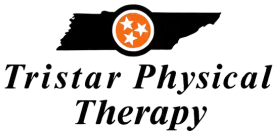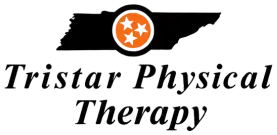Table of Contents
Introduction
Vestibular Rehabilitation is a specialized area of physical therapy that focuses on improving symptoms of dizziness and balance problems. It can take many forms, and treatment is tailored to each patient’s individual needs. At https://tristarpt.com/ , we offer Vestibular Rehabilitation and Mild Traumatic Brain Injury Physical Therapy with specialists who are certified by the APTA as competent in treating vestibular disorders.
Competency in Vestibular Rehabilitation through the American Physical Therapy Association
To obtain APTA certification in Vestibular Rehabilitation, physical therapists must undergo advanced training and demonstrate competence in treating vestibular disorders. At https://tristarpt.com/ , our specialists have undergone this training and certification process, ensuring that you receive the highest level of care.
Conditions Treated with Vestibular Rehabilitation
Vestibular Rehabilitation can help with a variety of conditions, including:
BPPV (Benign Paroxysmal Positional Vertigo)
BPPV is a type of vertigo caused by small crystals in the inner ear that dislodge and move into the balance canals, causing dizziness and other symptoms. Vestibular Rehabilitation can help alleviate these symptoms and prevent future episodes.
Meniere’s Disease
Meniere’s Disease is a disorder of the inner ear that causes vertigo, hearing loss, and other symptoms. Vestibular Rehabilitation can help manage these symptoms and improve overall quality of life.
Vestibular Neuritis
Vestibular Neuritis is an inflammation of the vestibular nerve, which controls balance and spatial orientation. Symptoms include dizziness, nausea, and imbalance. Vestibular Rehabilitation can help improve these symptoms and restore balance.
Labyrinthitis
Labyrinthitis is an inflammation of the inner ear that affects balance and spatial orientation. Vestibular Rehabilitation can help alleviate symptoms and improve balance.
Vestibular Migraine
Vestibular Migraines can cause dizziness, vertigo, and other symptoms. Vestibular Rehabilitation can help manage these symptoms and improve overall quality of life.
Unilateral or Bilateral Peripheral Vestibulopathy
Peripheral Vestibulopathy is a disorder of the vestibular system that affects balance and spatial orientation. Vestibular Rehabilitation can help manage symptoms and improve overall function.
Post-Concussion Syndrome
Post-Concussion Syndrome can cause dizziness, vertigo, and other symptoms. Vestibular Rehabilitation can help manage these symptoms and improve overall function.
Cervicogenic Dizziness
Cervicogenic Dizziness is caused by dysfunction in the neck. Vestibular Rehabilitation can help alleviate these symptoms and improve overall function.
Cerebellar and Brainstem Stroke
Strokes can affect the vestibular system, causing dizziness and other symptoms. Vestibular Rehabilitation can help manage these symptoms and improve overall function.
Post-Acoustic Neuroma Surgery
Acoustic Neuroma Surgery can cause dizziness and other vestibular symptoms. Vestibular Rehabilitation can help manage these symptoms and improve overall function.
Post-Occipital Nerve Release Surgery
Occipital Nerve Release Surgery can cause dizziness and other vestibular symptoms. Vestibular Rehabilitation can help manage these symptoms and improve overall function.
How Vestibular Rehabilitation Works
Vestibular Rehabilitation is tailored to each patient’s individual needs. Your therapist will assess your symptoms and develop a treatment plan that addresses your specific needs. Some common techniques used in Vestibular Rehabilitation include:
Gaze Stability Exercises
Gaze Stability Exercises involve focusing on an object while your head moves in different directions. This helps improve coordination between your eyes and head, which can improve balance.
Balance Exercises
Balance Exercises can include standing on an unstable surface, such as a balance ball, or performing exercises that challenge your balance. These exercises can help improve overall balance and stability.
Canalith Repositioning Maneuvers
Canalith Repositioning Maneuvers are a series of exercises performed to move small crystals in the inner ear back to their proper location. This can alleviate symptoms of vertigo caused by BPPV.
Vestibular Adaptation Exercises
Vestibular Adaptation Exercises involve exposing yourself to movements that cause dizziness, then gradually increasing the intensity. This can help strengthen the vestibular system and reduce symptoms of dizziness.
Habituation Exercises
Habituation Exercises involve exposing yourself to movements that cause dizziness but do not pose a safety risk. This can help your brain become accustomed to these movements and reduce symptoms of dizziness.
Benefits of Vestibular Rehabilitation
Vestibular Rehabilitation can have many benefits, including:
Improved Balance and Coordination
Vestibular Rehabilitation can help improve balance and coordination, reducing the risk of falls and accidents.
Reduced Dizziness and Vertigo
Vestibular Rehabilitation can help reduce symptoms of dizziness and vertigo, improving overall quality of life.
Increased Activity Tolerance
By improving balance and coordination, Vestibular Rehabilitation can help increase activity tolerance and overall function.
Improved Visual Focus
Vestibular Rehabilitation can help improve coordination between the eyes and head, improving visual focus and reducing symptoms of dizziness.
Conclusion
At https://tristarpt.com/ , we offer Vestibular Rehabilitation and Mild Traumatic Brain Injury Physical Therapy with specialists who are certified by the APTA as competent in treating vestibular disorders. If you are experiencing symptoms of dizziness or balance problems, contact us to schedule an appointment today. Our team is dedicated to providing the highest level of care and helping you get back to a more active and productive life.

